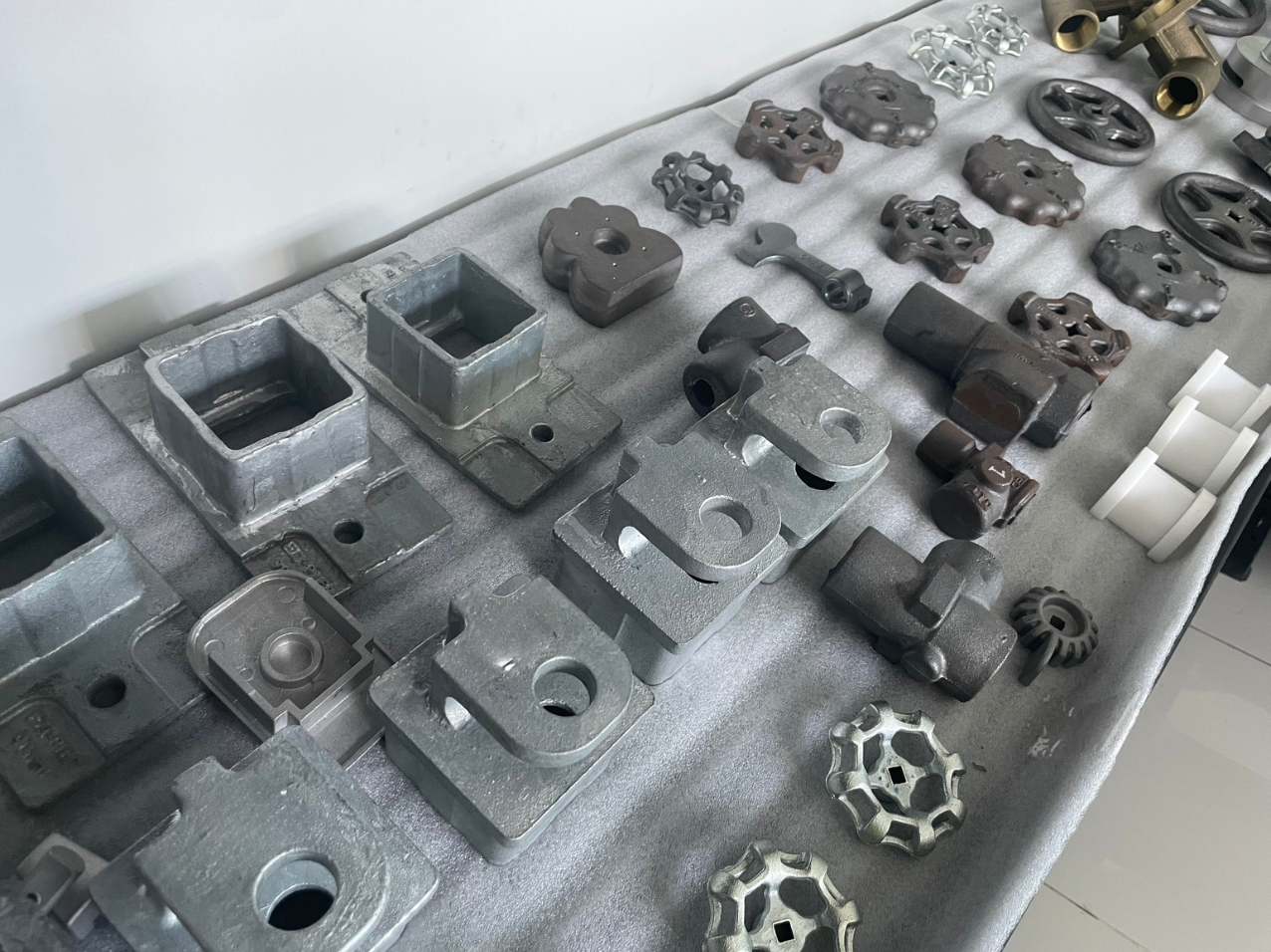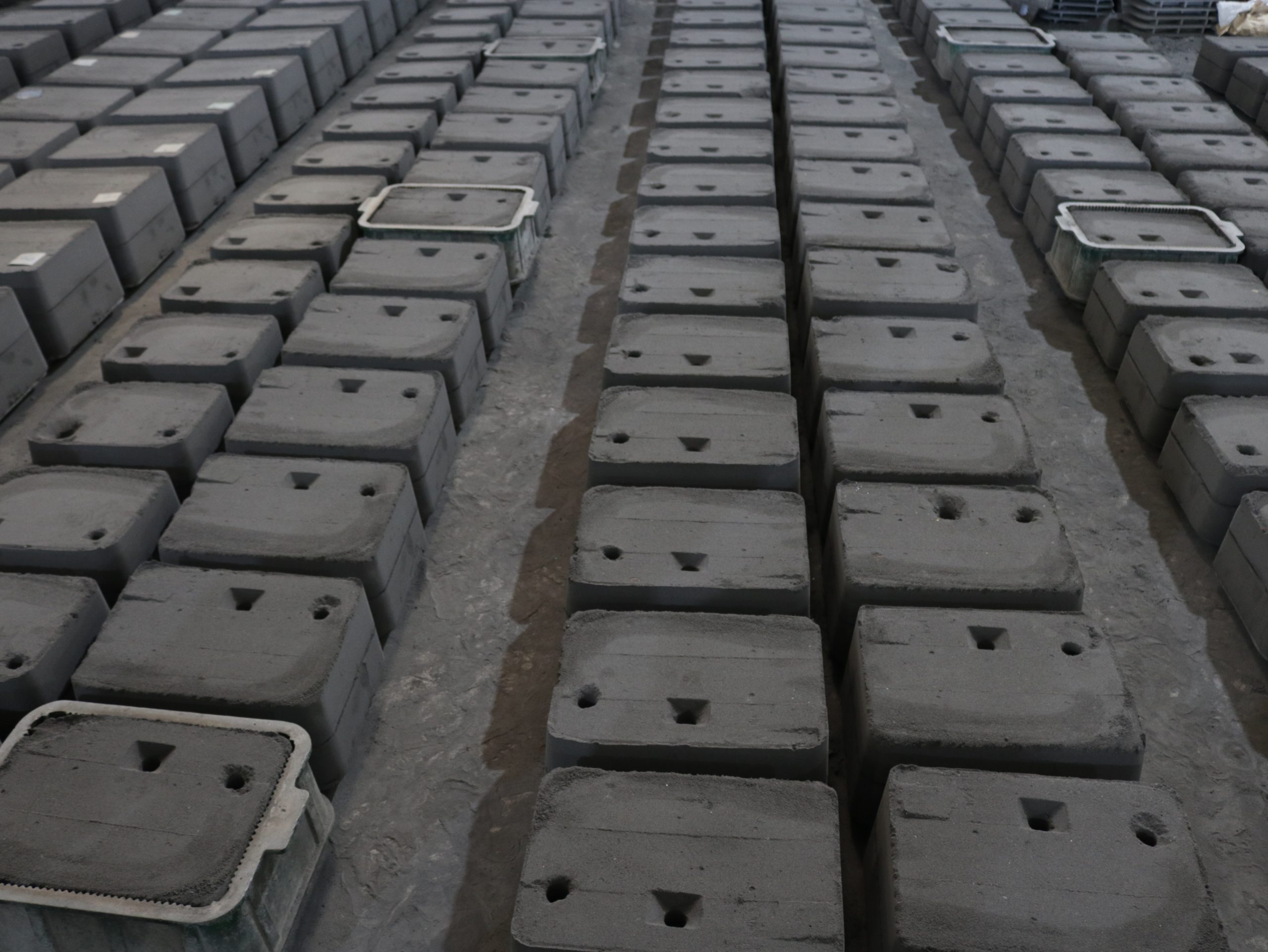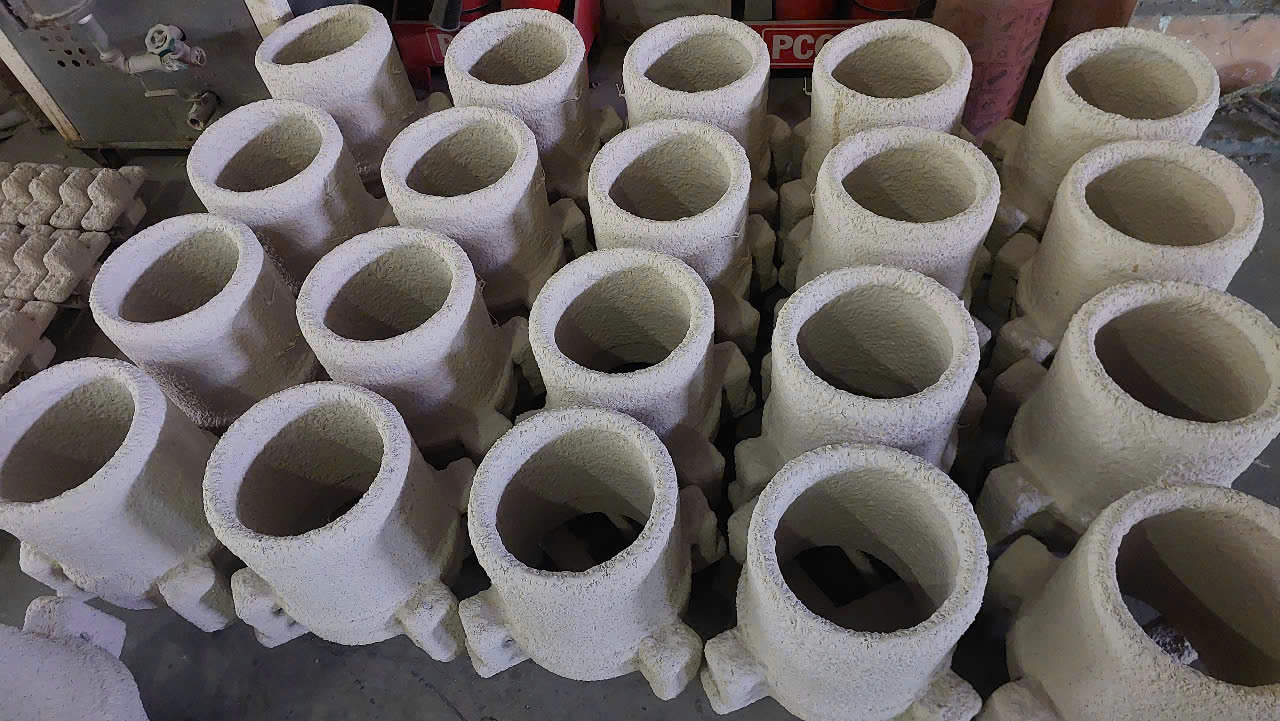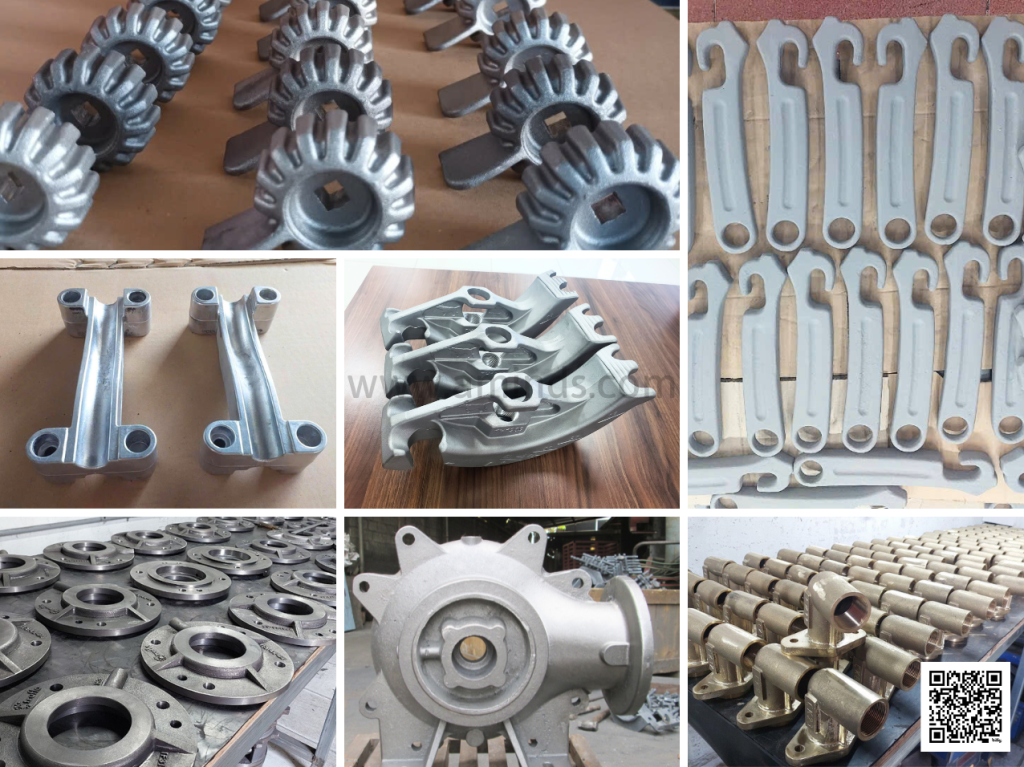“Metal casting is a manufacturing process in which molten metal is poured or injected into a custom-made mold to form the desired shape after cooling and hardening. It is one of the modern processes with ancient roots, used to create metal parts used in everyday life with high strength and hardness.”
According to customer requirements, we manufacture steel components by different types of metal casting methods from small to large steel parts such as spare parts, punched parts, laser parts, complex components, box dumpers, and special designs. No matter what casting method your project requires, our factories consistently deliver high-quality cast metal products that meet or exceed expectations.

What are 3 popular types of metal casting?
Sand casting
Sand casting is one of the most popular and simplest types of metal casting, and has been used for centuries. This method allows for smaller batches than permanent mold casting and at a very reasonable cost. Not only does this method allow manufacturers to create products at a low cost, but there are other benefits to sand casting, such as very small-size operations.
The process allows for castings small enough fit in the palm of one’s hand to those large enough only for train beds (one casting can create the entire bed for one rail car). It also allows most metals to be cast depending on the type of sand used for the molds. Over 60% of all metal castings are produced via sand casting process.
In general, we can distinguish between two methods of sand casting; the first one using green sand and the second being the air set method.
The sand is bonded using clays, chemical binders, or polymerized oils (such as motor oil). Sand can be recycled many times in most operations and requires little maintenance.

Die casting
The die casting process forces molten metal under high pressure into mold cavities (which are machined into dies). Die casting requires two larges, moving non-ferrous metal parts that clamp together under high-pressure. Molten metal is injected into the die and the metal parts are separated once hardened.

Most die castings are made from nonferrous metals, specifically zinc, copper, and aluminum-based alloys, but ferrous metal die castings are possible. The die casting method is especially suited for applications where many small to medium-sized parts are needed with good detail, a fine surface quality and dimensional consistency.
Investment casting
The process of investment casting begins with filling a mold with wax. Once the wax hardens, it is coated multiple times in a ceramic material. This is heated until the wax melts and the ceramic mold remains. The mold is filled with molten metal, cooled, and then the ceramic material is broken off.

Beside 3 main types we mentioned, there are still some types of metal casting methods which are using around the world with a small quantity every year.
AM Industries Vietnam’s metal casting services
Patternmaking
A pattern is a replica of the exterior of the casting. Patterns are typically made of wood, metal, plastic, or plaster. Patternmaking is incredibly important for industrial part-making, where precise calculations are needed to make pieces fit and work together.

Core making
If a casting is hollow, an additional piece of sand or metal (called a core) shapes the internal form to make it hollow. Cores are typically strong yet collapsible so they can be easily removed from the finished casting.
Molding
To visualize the metal casting process so far, imagine yourself walking on the beach toward the ocean. Look at a footprint you leave behind in the wet sand. Your foot would be the core, and the impression left in the sand is a mold of your foot. Molding is a multistep process that will form a cast around the pattern using molding sand. In casting, a mold is contained in a frame called a flask.

Green sand, or molding sand, is packed into the flask around the pattern. This is known as metal sand casting. Once the sand is packed tight, the pattern can be removed and the cast will remain.
Alternatively, a two-piece, non-destructible metal mold can be created so that the mold can be used repeatedly to cast identical parts for industrial applications.
Melting and Pouring Molten Metal
After metal is melted, it is poured into the cavity of the mold and left to solidify. Once solidified, the shakeout process begins: the molds undergo vibration to remove sand from the casting.
In industrial applications, our equipment keeps production output high because of its efficient and smooth performance. Removed sand is typically collected, cooled, and reclaimed to be used once more in future castings.
Our Sand Casting Conditioner improves this process of sand separation from castings by removing and cooling sand and castings and evaporating moisture, while alleviating the casting damage that is common during this point of the process. The end results are a clean cast and sand ready for the reclamation process.
Cleaning
In this final step, the cast metal object is removed from the mold and then fettled. During the fettling, the object is cleaned of any molding material, and rough edges are removed.

If you want reliable steel fabrication – steel spare parts – steel components, contact the experts at AM Industries Vietnam. Our processes include stamping, welding, folding, bending, and finishing to match our exact requirements.

Working as a solution provider, at AM Industries Vietnam, we are completely focused on our approach and it is reflected in our business process. Due to our committed approach, we are highly trusted by our clients. Contact us here to get the best quote!
FAQS
1. How do I choose the right casting process for my project?
-> Depends on the complexity of the design, tolerances, materials used and production volume. For example, die casting is ideal for large-scale production with high precision, while sand casting suits larger, simpler parts.
2. What materials are used for metal casting?
-> Metal casting works with a wide range of materials, including steel, aluminum, iron, copper, and zinc alloys. The choice of material depends on your product’s strength, weight, and corrosion resistance requirements.
3. What is the difference between a mold and a pattern in metal casting?
-> A pattern is the original model or shape used to create the cavity in the mold, while the mold is the actual hollow space where molten metal is poured. In short, the pattern forms the mold, and the mold forms the final cast part.
4. What quality standards are applied in metal casting?
-> At AM Industries Vietnam, all casting processes follow international standards such as ISO 9001, ASTM, AS/NZS, and EN to ensure consistent mechanical properties, dimensional accuracy, and surface finish. Each casting is inspected by NDT methods like ultrasonic or X-ray testing before shipment.
5. Why is it necessary to reprocess with CNC machining after casting?
-> Casting provides the basic shape of a metal part, but it often lacks the tight tolerances and fine surface finish required for assembly or functional performance. CNC machining is used after casting to remove excess material, achieve precise dimensions, drill holes, and create accurate mating surfaces.

